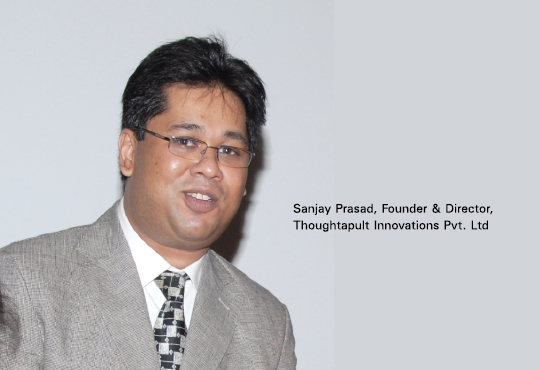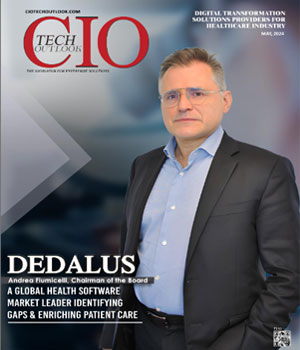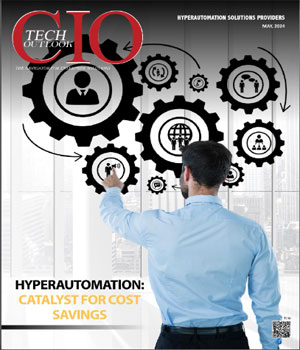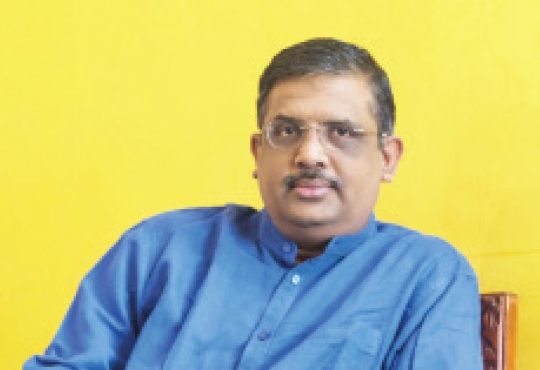
CIOTechOutlook >> Magazine >> November - 2016 issue
Decoding the Buzz around Internet of Things
By
 Imagine arriving home from work in your self-driven car and unlocking your home with just a tap on your smartphone screen. The door opens and the lights and AC start working the moment you enter. Your electric kettle has finished heating up your coffee, and you find that your washing machine has finished washing your week’s laundry. And while you are busy finishing off your chores, you don’t have to worry about the lights or the AC in the living room. Your home is smart enough to control all the devices by itself.
Imagine arriving home from work in your self-driven car and unlocking your home with just a tap on your smartphone screen. The door opens and the lights and AC start working the moment you enter. Your electric kettle has finished heating up your coffee, and you find that your washing machine has finished washing your week’s laundry. And while you are busy finishing off your chores, you don’t have to worry about the lights or the AC in the living room. Your home is smart enough to control all the devices by itself.Living like this would seem like a dream; but it isn’t! This is among the very few things that Internet of Things (IoT) has achieved in the short span that it has been around. Surprised, aren’t you? Well, for the uninitiated, there’s more good news.
What is the Internet of Things?
IoT is a network of smart devices that are capable of interacting with each other. The devices, embedded with electronics, software, and sensors, collect and transmit data. IoT brings together the various dependent parameters in the physical world and connects them virtually over the internet. And this is what gives IoT its asset of bridging the physical barriers to improve the efficiency and effectiveness of our everyday lives.
Be it smart grids, smart homes, heart monitors, farm monitoring devices, fitness trackers, or intelligent transportation, IoT has sprouted in every technological field, and is winning people and businesses over with its ease of use and abilities. There are about 4 billion connected devices out in the world currently, and this number is projected to grow over six times by 2020.
Although connected devices already existed in the world, the term ‘Internet of Things’ made them popular on a global scale. Kevin Ashton, Co-founder of the MIT Auto ID centre, coined this term for a network of objects connected to the Radio-Frequency Identification (RFID) technology that he helped develop.
What are the industries it is currently being used in?
IoT is a network of advanced devices and systems connected over a specified network protocol and is key to automating a variety of processes in diverse fields. The current applications of IoT range from home and vehicle automation to healthcare, energy, manufacturing, and agricultural processes.
The home automation products feature thermostats that monitor electricity consumption and help reduce electricity bills. Some products also control everything from lighting, security, and entertainment, apart from heating and cooling systems. Even major firms with offices around the globe manage their security, climate, and electricity usage of their buildings through IoT.
Cities equipped with IoT devices have managed to streamline and reduce the vehicular traffic on the roads and also reduced environmental pollution. Smart street lights that switch on only when movement is detected, now save millions in electricity bills.
Manufacturing isn’t far behind. Manufacturing plants, equipped with sensors can easily identify bottlenecks. While this helps in avoiding delivery delays, it also reduces the need for man-power, and thereby reducing the manufacturing time.
In addition to chips that monitor heart health, daily fitness tracker devices can now monitor sleep patterns, water consumption, diet, and exercise, virtually maintaining your life’s health record.
IoT has significantly helped agriculture as well. Be it machines that track soil temperature and humidity, or those that track fields to control pests using natural measures, Internet of Things is making huge strides in your laidback farm environment as well.
What are the challenges that IoT faces?
While the field has been making unbelievable progress, it also faces many hassles due to the lack of protocol or a controlling body. There is currently no accepted standard for the network that IoT devices communicate in. So, the devices face a challenge of interoperability with others in the same spectrum. The lack of collaboration might itself cause setbacks in the technological innovation of IoT devices.
In addition to this, the devices find themselves at the core of security challenges; IoT devices, with the huge amount of personal data that they transmit over the internet need to be secure in order to ensure that the user data isn’t compromised.
What is the future of IoT?
CXO Insights
Going Digital in the Aerospace Industry - The...
By Arvind Mehra, Executive Director & CEO, Mahindra Aerospace
Activities & Experience: Untapped Market Of The...
By Ankit Jindal, Co-Founder and CEO, Trodly
How to derive Business value out of Business...




